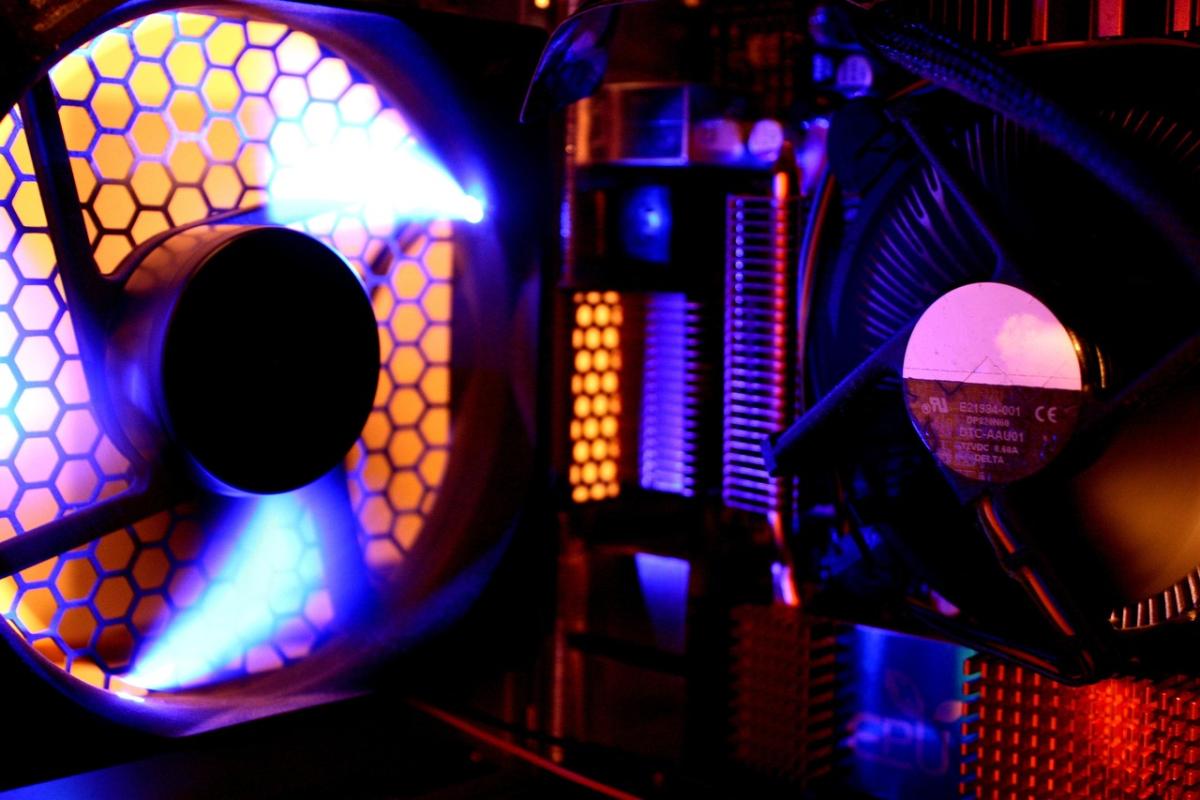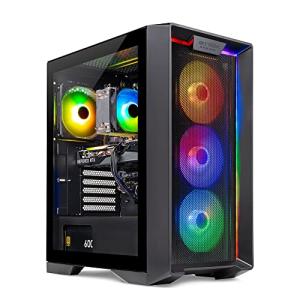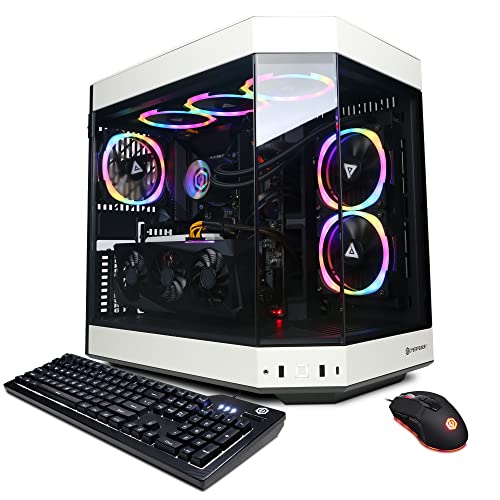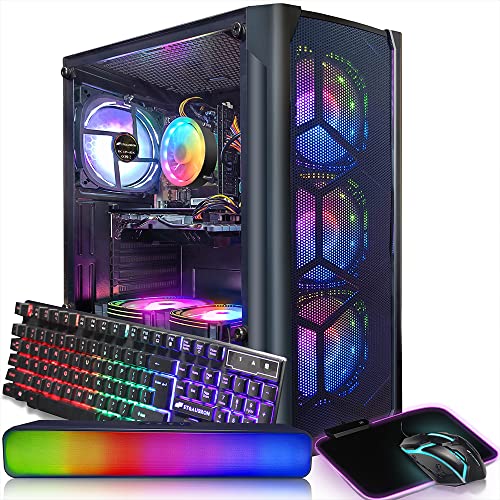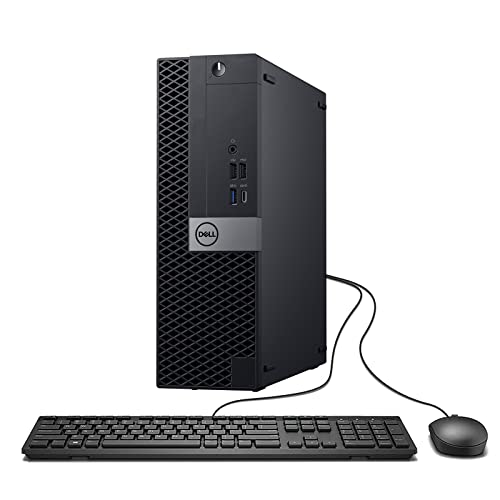Cooling fans are critical components in maintaining the thermal stability of high‑performance PCs. The right fans not only keep your system cool but also contribute to overall noise reduction and long‑term hardware longevity. This article offers guidance on selecting cooling fans that deliver optimal airflow and durability.
Evaluate factors such as airflow (measured in CFM), static pressure, and noise levels. High‑quality fans with fluid dynamic bearings or magnetic levitation designs offer longer lifespans and quieter operation. Consider compatibility with your case design and the ability to integrate with software controls for optimized performance.
Plan the placement of fans to create a balanced airflow system—intake at the front and exhaust at the rear. Regular cleaning and maintenance help preserve fan performance and reduce dust accumulation. Adjust fan curves in the BIOS or through dedicated software to balance cooling efficiency with quiet operation.
Selecting high‑quality cooling fans is essential for maintaining a stable and quiet high‑performance PC. By considering airflow, noise, durability, and installation best practices, you can choose fans that effectively cool your system and contribute to its long‑term reliability.
Complete PC Cooling Fan Selection Guide: Boost Airflow & Quiet Performance
Effective cooling fans are the unsung heroes of any high-performance PC. They regulate temperatures, prevent thermal throttling, and extend hardware lifespan—while keeping noise levels in check. This comprehensive guide will walk you through every factor to consider when choosing, installing, and maintaining fans that maximize airflow, minimize sound, and ensure rock-solid reliability.
Introduction to PC Cooling Fans
Modern CPUs and GPUs generate substantial heat under load. Without adequate airflow, thermal buildup can trigger automatic downclocking or even sudden shutdowns. Choosing the right cooling fans is not just about raw airflow; it’s about balancing static pressure, acoustic performance, bearing durability, and case compatibility to create a harmonious thermal ecosystem.
In this article, we’ll explore:
- Why cooling fans are critical for performance and hardware longevity
- Different fan types and bearing technologies
- Key performance metrics: CFM, static pressure, and noise ratings
- Software integration and fan curve optimization
- Optimal installation layouts and maintenance routines
- Advanced cooling strategies and real-world case studies
Why Cooling Fans Matter
Every component in your PC—from the processor to VRMs—operates best within specific temperature thresholds. Exceed those limits, and you risk reduced performance, system instability, and shortened component lifespan. Properly selected and installed fans:
- Maintain stable operating temperatures to prevent thermal throttling
- Reduce the risk of heat-induced hardware failure
- Minimize noise by allowing fans to spin at lower RPMs while achieving equal airflow
- Help dust filters operate more effectively by controlling internal air pressure
Types of Cooling Fans
Axial Fans
Axial fans move air parallel to the fan blades and are the most common type used in PC cases. They excel at moving large volumes of air (high CFM) but can struggle against dense radiators or grills.
Blower Fans
Blower (or centrifugal) fans pull air in axially and expel it radially. While noisier at higher speeds, they maintain consistent static pressure—making them ideal for compact systems and radiator/cooled GPU setups.
Radiator Fans
Specifically engineered for liquid-cooling radiators, these fans combine medium CFM with high static pressure to force air through tight fin arrays. Look for models labeled “radiator optimized.”
Bearing Technologies and Durability
Fan longevity and noise performance are heavily influenced by bearing design. Here’s a breakdown:
| Bearing Type | Lifespan | Noise Profile | Typical Use Case |
|---|---|---|---|
| Sleeve Bearing | 20,000–30,000 hours | Higher rumble over time | Budget or infrequent use |
| Hydraulic (FDB) | 60,000–70,000 hours | Quiet operation | Standard gaming/workstations |
| Fluid Dynamic Bearing | 80,000+ hours | Very low noise | High-end builds |
| Magnetic Levitation | 100,000+ hours | Minimal friction noise | Premium silent setups |
Key Performance Metrics
Airflow (CFM)
Measured in Cubic Feet per Minute, CFM indicates the volume of air a fan moves when unobstructed. Higher CFM fans can cool larger cases more effectively, but raw CFM ratings can drop when the fan is mounted behind filters or radiators.
Static Pressure (mmH₂O)
Static pressure measures a fan’s ability to push air through resistance—like radiator fins or case grills. A fan with high static pressure maintains its performance even under load, making it crucial for CPU/GPU radiators.
Noise Level (dBA)
Decibels A-weighted quantify human perception of noise. Manufacturers often report noise at maximum RPM. For quiet operation, target fans rated below 25 dBA under typical workloads.
Software Control & Fan Curve Optimization
Modern motherboards and dedicated controllers allow fine-grained control over fan speeds. Leveraging these tools can dramatically improve acoustics while keeping temperatures in check.
BIOS Fan Tuning
- Set custom curves based on CPU and GPU temperature sensors.
- Use a gentle ramp—slow increases in RPM—to avoid sudden noise spikes.
- Implement hysteresis (delay) to prevent fans from oscillating at threshold points.
Dedicated Software Utilities
- AI Suite (ASUS), Command Center (Gigabyte), ROG Fan Xpert: GPU-tuned profiles
- SpeedFan and Argus Monitor: universal fan controllers with custom scripting
- Third-party RGB controllers often include advanced fan curves for hybrid fans
Optimal Fan Installation & Airflow Layout
Creating balanced airflow ensures cool intake air and efficient exhaust of heated air. Follow these guidelines:
- Front and bottom fans: intake cooler ambient air
- Top and rear fans: exhaust hot air generated by CPU, GPU, and VRMs
- Positive vs. Negative Pressure: Slight positive pressure (more intake) reduces dust build-up
- Maintain clear airflow paths—avoid cable obstructions and clutter
- Use dust filters on all intakes for easy cleaning and dust management
Airflow Configuration Table
| Configuration | Intake Fans | Exhaust Fans | Resulting Airflow |
|---|---|---|---|
| Balanced | 2 front | 2 rear/top | Neutral—stable temperatures and dust control |
| Positive Pressure | 3 front/2 bottom | 1 rear | Lower dust ingress, slightly warmer exhaust temperatures |
| Negative Pressure | 1 front | 2 top/2 rear | Max exhaust efficiency, potential dust build-up |
Maintenance and Cleaning Tips
Well-maintained fans perform better and last longer. Adopt a regular cleaning schedule to remove dust and debris:
- Power off and unplug your PC before maintenance
- Use compressed air in short bursts from 15 cm distance
- Clean dust filters monthly, or more often in dusty environments
- Inspect fan blades for buildup and wipe with lint-free cloth if needed
- Lubricate bearings where applicable (only if manufacturer supports it)
Advanced Cooling Strategies
For extreme overclockers and silent-PC enthusiasts, consider these techniques:
- Hybrid Fan Push/Pull: Pair two fans on a radiator—one pushing, one pulling—to maximize static pressure and cooling efficiency.
- Fan Speed Segmentation: Assign multiple RPM zones—low for idle, medium for gaming, high for stress tests.
- Liquid Submersion: While beyond typical builds, submersion cooling eliminates airflow concerns entirely by immersing components in dielectric fluid.
- Sound Dampening Foam: Line your chassis with acoustic foam panels to absorb residual fan noise without impeding airflow.
Case Study: Performance Overhaul in a Streaming Rig
A content creator was battling CPU temperatures of 85 °C under 100% encoding loads. By following our guide they achieved:
- Replaced three stock 120 mm fans (30 CFM each) with high-static-pressure 140 mm fans (70 CFM each)
- Reconfigured airflow to positive pressure—two front intake, one bottom intake, two top exhaust
- Set custom fan curves in BIOS, limiting noise to 25 dBA during streaming
- Reduced peak CPU temperatures to 65 °C and GPU to 60 °C, improving stability and lifespan
Stream viewers noticed decreased background noise, and the creator reported zero thermal throttling during marathon sessions.
Best Practices Checklist
- Choose fan types and sizes compatible with your chassis and cooling needs
- Select bearings and designs rated for long-term durability
- Compare CFM, static pressure, and noise ratings side by side
- Leverage motherboard and software controls to craft precise fan curves
- Balance intake and exhaust for optimal airflow and dust management
- Maintain a cleaning schedule and inspect fans regularly
- Experiment with advanced setups—push/pull, hybrid cooling, acoustic insulation
Conclusion
Selecting and deploying the right cooling fans is a foundational step toward building a high-performance, quiet, and reliable PC. By understanding fan types, performance metrics, installation layouts, and maintenance routines, you can tailor a cooling solution that meets your specific needs—whether you’re gaming, content creating, or running intensive compute tasks.
Use this guide to inform your next upgrade, track performance gains, and ensure your system remains cool under pressure while keeping noise to a minimum. Optimal fan selection and thoughtful airflow design will reward you with lower temperatures, enhanced longevity, and a more enjoyable computing experience.
